
I forgot to post a picture of my finished Ukrainian Easter egg. Someone kindly pointed that out to me a few days ago. (Hi, Jocelyn!)
So here's my egg in all its glory. And, no, I won't be going into production on these any time soon...

Striving for self-sufficiency in a modern world, we're a homeschooling family of 3 with a 13yo still crazy about ships of the air and sea, a mad-for-gardening dad who can't keep up with all his seedlings and me, a mom who would love to have more time to indulge in spinning, knitting, weaving, sewing or reading. We're creating our version of the good life in the Shenandoah Valley.
 Had a few apples (Romes, Fuji, and who knows what) that wouldn't keep much longer so cut them up this morning and made a batch of applesauce. Some will go into the freezer for later but we'll eat a good bit of it this week.
Had a few apples (Romes, Fuji, and who knows what) that wouldn't keep much longer so cut them up this morning and made a batch of applesauce. Some will go into the freezer for later but we'll eat a good bit of it this week.
 We can't. First we boiled two dozen brown eggs and DS spread newspaper on the worktable in the kitchen. DH scrounged up wide-mouth jars to hold the dye. This year I bought a dye kit at the dollar store. The dyes come in pellet form and all but the red and purple ones required vinegar be added to the water when mixing.
We can't. First we boiled two dozen brown eggs and DS spread newspaper on the worktable in the kitchen. DH scrounged up wide-mouth jars to hold the dye. This year I bought a dye kit at the dollar store. The dyes come in pellet form and all but the red and purple ones required vinegar be added to the water when mixing. 


 The next step was to dip the egg in the first color. Color order is chosen by its coverage ability. I stirred up yellow, orange, red, royal blue, and black and set them up on a separate workspace in that order.
The next step was to dip the egg in the first color. Color order is chosen by its coverage ability. I stirred up yellow, orange, red, royal blue, and black and set them up on a separate workspace in that order.


 Since I only wanted two dye colors, yellow and red, for my egg, I finished ahead of DH and DS who still have work to do on theirs. I needed to get started on dinner and DH obligingly offered to remove the wax from my egg.It's easy to do. Just hold the egg close to the candle's flame and let the wax heat till you can wipe it off with a paper towel but be careful working around the flame.
Since I only wanted two dye colors, yellow and red, for my egg, I finished ahead of DH and DS who still have work to do on theirs. I needed to get started on dinner and DH obligingly offered to remove the wax from my egg.It's easy to do. Just hold the egg close to the candle's flame and let the wax heat till you can wipe it off with a paper towel but be careful working around the flame. 
 This week I broke out the kistky, beeswax and dye packets. DH and DS are ready to try making Ukrainian Easter eggs.
This week I broke out the kistky, beeswax and dye packets. DH and DS are ready to try making Ukrainian Easter eggs.
 Stir marinade ingredients together in small bowl. May use small food processor if desired.
Stir marinade ingredients together in small bowl. May use small food processor if desired.  Holly dog likes to be close to her humans when bad weather hits. She usually squeezes under my chair when she hears the least rumble of thunder and with gusts up to 60mph, the windows are whistling and rattling to beat the band. This way I could pull the rug frame right up next to her basket so we were both comfortable. She doesn't like a spinning wheel near her when it's in motion.
Holly dog likes to be close to her humans when bad weather hits. She usually squeezes under my chair when she hears the least rumble of thunder and with gusts up to 60mph, the windows are whistling and rattling to beat the band. This way I could pull the rug frame right up next to her basket so we were both comfortable. She doesn't like a spinning wheel near her when it's in motion. It's proving very helpful as several of the fabrics have turned out different from the way I imagined they would look when hooked. Good to know when I start planning my next hooked projects.
It's proving very helpful as several of the fabrics have turned out different from the way I imagined they would look when hooked. Good to know when I start planning my next hooked projects.
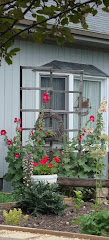


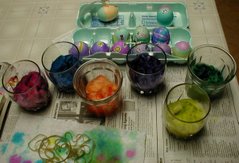
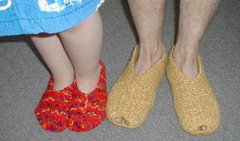
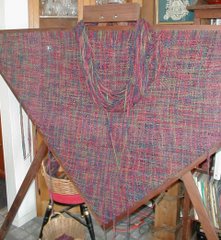
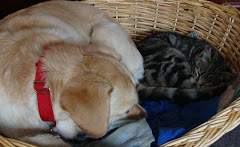
| Net Amount | ||||
| Food | Frozen | Canned | Dried yield | Root cellar |
| apples | 2.5 bushels | |||
| applesauce | 15 pints | |||
| beans, green | 167 quarts | |||
| beets, pickled | 34 qts | |||
| broccoli | 32 lbs | |||
| cabbage, green | 4.5 qts | |||
| cabbage, red | 3.5 qts | |||
| cherries, sweet | 46 pts | 4 lbs | ||
| jelly, grape | 6 pts, 10 half-pts | |||
| jerky | 3 lbs | |||
| juice, grape | 72 qts, 27 half-gals | |||
| meat | 7 qts | |||
| mincemeat, green tomato | 7 pts | |||
| mustard, cranberry | 4 half-pints | |||
| mustard, nectarine | 21 pints | |||
| nectarines | 40 halves | 3 qts | ||
| peach nectar | 18 pts | |||
| pear honey | 6 pts, 1 half-pt | |||
| pears | 6 qts | |||
| peppers, green bell | 1 pt | |||
| peppers, hot banana, pickled | 24 qts | |||
| peppers, pepperoncini, pickled | 5 qts | |||
| pickles, bread and butter (cucumbers and onion) | 24 qts | |||
| potatoes | 11 qts | 5 bushels | ||
| preserves, peach | 6 pts | |||
| preserves, rhubarb-strawberry | 11 pints | |||
| rhubarb, chopped | 3 qts | |||
| salsa | 33 qts | |||
| sauerkraut | ||||
| spaghetti sauce | 2 half-gals | |||
| spinach | 3 lbs | |||
| taco sauce, green tomato | 7 pts, 1 half-pt | |||
| tomatoes | 28 qts | 6 qts | ||
| zucchini and spaceship squash, sliced | 3 qts | |||
| zucchini chips | 4 qts | |||
| zucchini, shredded | 3 qts | |||
| zucchini, sliced lengthwise | 2 qts | |||